Buying Guide
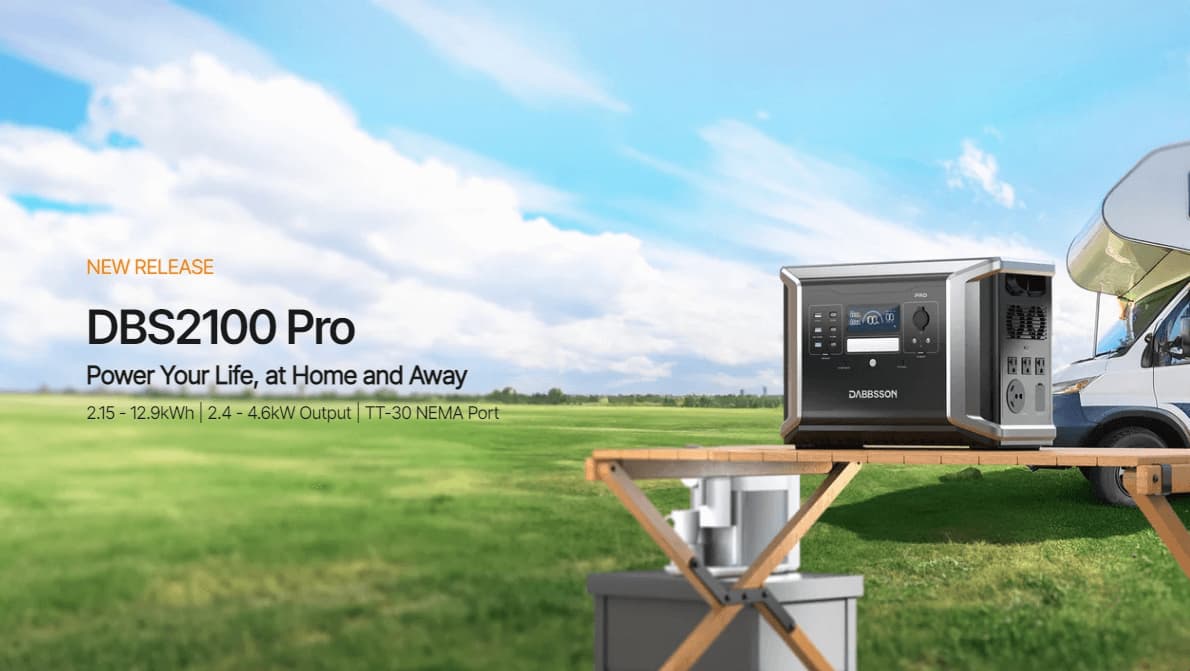
Dabbsson DBS2100Pro Solar Generator: A Powerhouse for Outdoor Adventures and Home Use
In a world where power outages are increasingly common and the demand for sustainable energy solutions is more critical than ever, the Dabbsson DBS2100Pro Solar Generator emerges as a beacon of reliability and performance.
Buying Guide
Oct 25, 2024
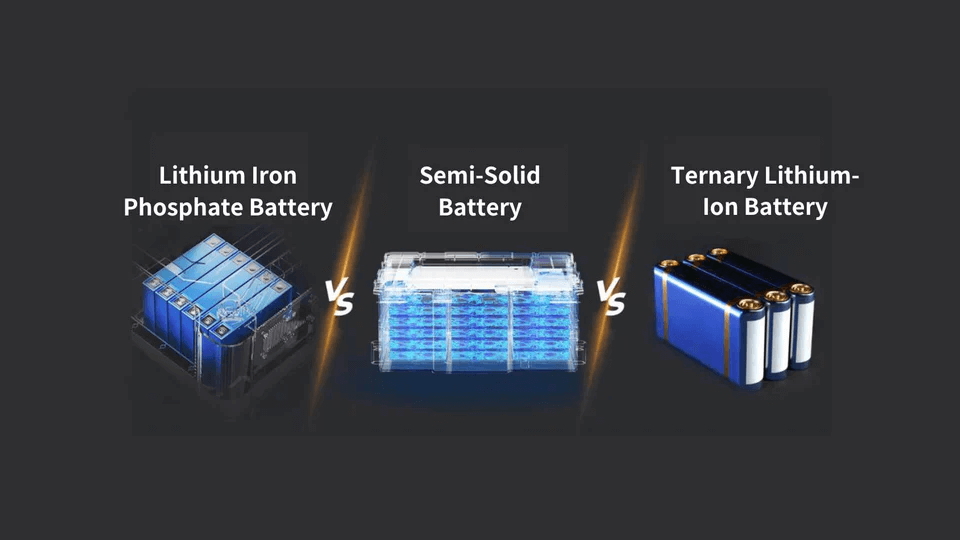
What is a semi-solid battery? Also, how does it compare to lithium iron phosphate batteries?
Today, batteries are essential in our lives and come in many types. It's important to choose wisely, especially for large batteries in portable power stations and electric vehicles.
Buying Guide
Oct 17, 2024
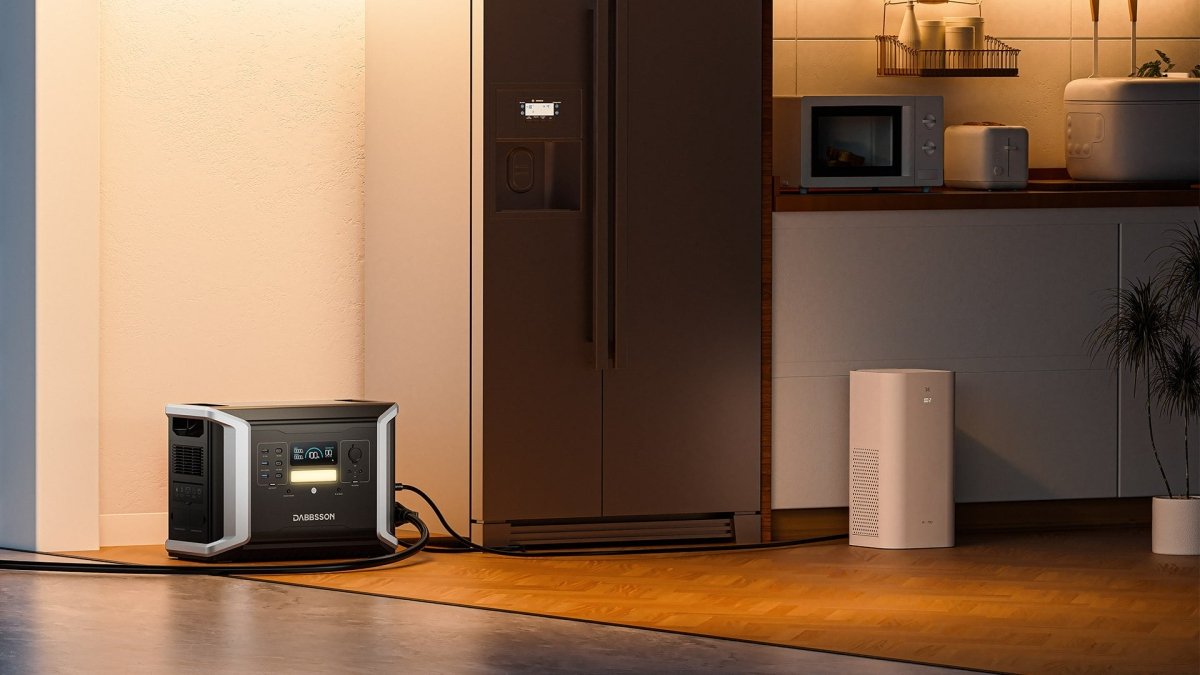
3 Best Battery Backup for Refrigerators and Freezers During Power Outages
Power outage can strike at any time and can ruin all the food stored in your refrigerators or freezers. A dependable battery backup for refrigerator and freezer will save you from such situations during unexpected blackouts.
Buying Guide
Sep 09, 2024
Home Backup
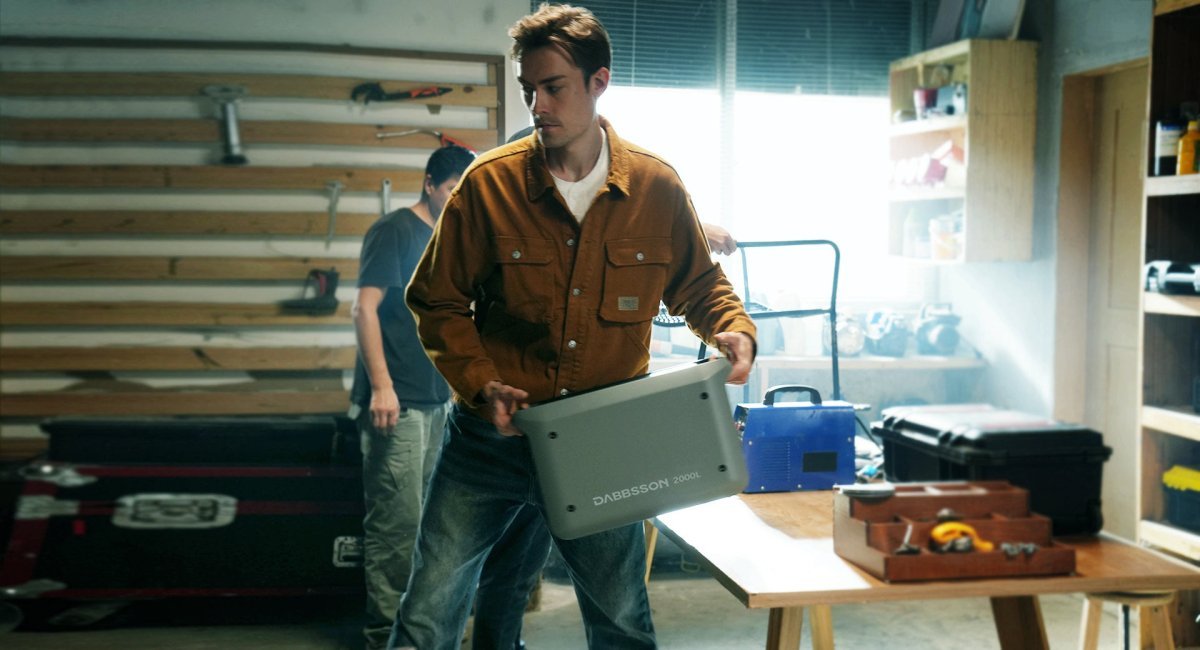
Dabbsson 2000L: The Lightest 2kWh Portable Power Station
Dabbsson 2000L Outdoor large capacity portable power station redefines what true portability and performance look like,Featuring a massive 2048Wh capacity, powerful 2200W output, and weighing only 18.6kg (30% lighter) than the industry average.
Home Backup
Jun 11, 2025
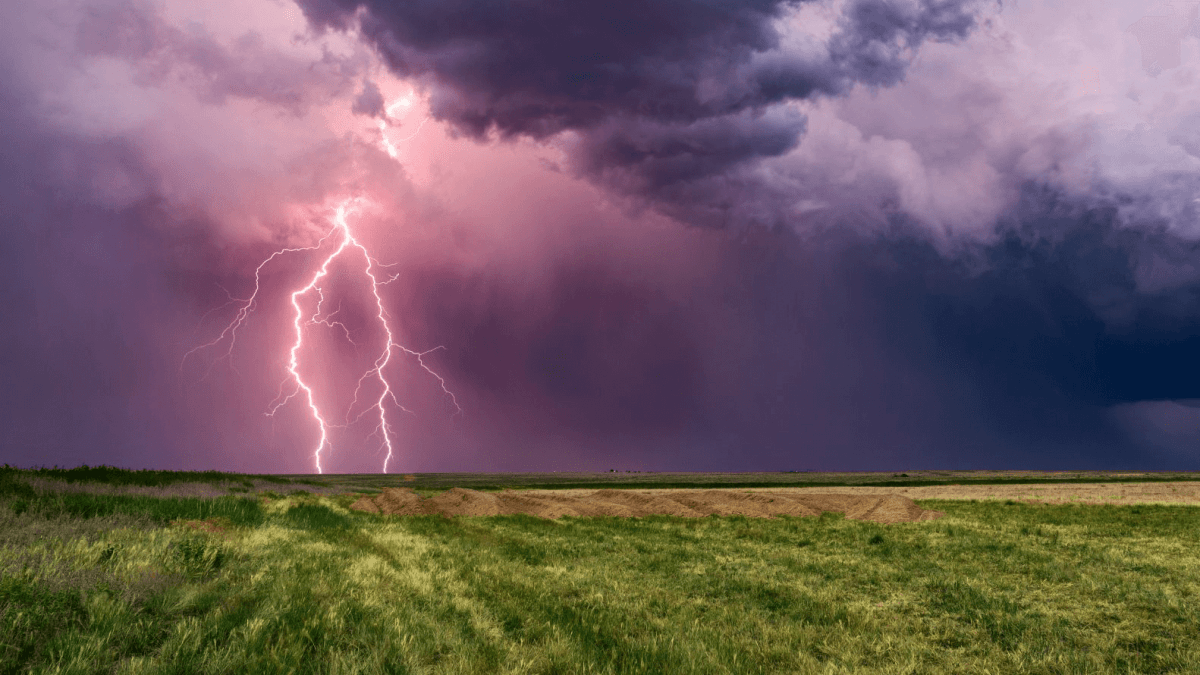
Preparing for Fall Weather
As the summer season comes to a close and everyone gets a little more bundled up due to cooler weather, seasonal weather shifts are something to be mindful of.
We’re already seeing power outages due to heavy winds, rain, flash floods, and other weather-induced issues.
Unexpected Storms and Outages
According to the National Weather Service, heavy, unexpected rain or hail storms are expected to affect the Gulf Coast, moving from west to east for the early part of September. Severe crosswinds, snow and/or sleet are also expected.
Additionally, excessive Heat Watches and Warnings are affecting areas like California and Arizona. You can imagine many folks will be using their air conditioners, which will put a strain on respective power grids. Outages can certainly occur.
Power Outages Are Common During the Fall Season
Power outages are common occurrences during the fall season. According to the U.S. Department of Energy, from 2000 to 2021, 83% of the country’s major power outages were brought on by weather.
In 2022 alone the US experienced 18 weather-related disasters. These disasters caused over a billion dollars in damage each.
Major weather events that caused power outages in 2022 include:
Hurricane Ian
Hurricane Nicole
Winter Storm Elliott
Examples of severe weather include:
Freezing rain
Lightning storms
Ice formation (especially on power lines)
Heavy snow
High winds
Heatwaves flooding
Other Causes of Fall Outages
Trees are common culprits when it comes to power outages, and this goes especially true during the fall. Heavy winds and seasonal weather shifts might cause dead trees or broken branches to disrupt/destroy power lines. Tree roots also accumulate ice, which can begin during the fall season and cause damage to underground power lines.
Human error and infrastructure can also cause outages. The National Library of Medicine asserts that US electricity customers faced slightly over 8 hours of outages – which is the highest currently on record. Most of these outages were due to hurricanes, wildfires, and snowstorms.
Fall Weather Checklist
Preparing for adverse weather and possible power outages is more important than ever. Alternative light sources such as candles, headlamps, flashlights, and/or lanterns should be mainstays in anyone’s emergency inventory.
Having a 30-90 day non-perishable food and water supply will ensure you and your loved ones get all the sustenance and hydration no matter what the weather and the fall season bring.
Other fall weather checklist items include radios, strike anywhere matches & lighters, warm clothes and base layers, emergency contact information, as well as a generator.
Dabbsson Solar Generator Kit
DBS1400 Pro + DBS210S Solar Generator
● 1.38-11.36kWh solar generator● 2400W huge power output, 3600W with P-Boost● 100% charged in 1.6 hours (1200W max solar charging)DBS2100 Pro + DBS210S Solar Generator
● 2.15-12.9kWh solar generator● 2400W huge power output, 3600W with P-Boost● 100% charged in 2.38 hours (1200W max solar charging)DBS3500 + DBS420S Solar Generator
● 3.43-28.14kWh solar generator● 3600W mega power output● 100% charged in 1.91 hours (2400W max solar charging)
Home Backup
Oct 14, 2024
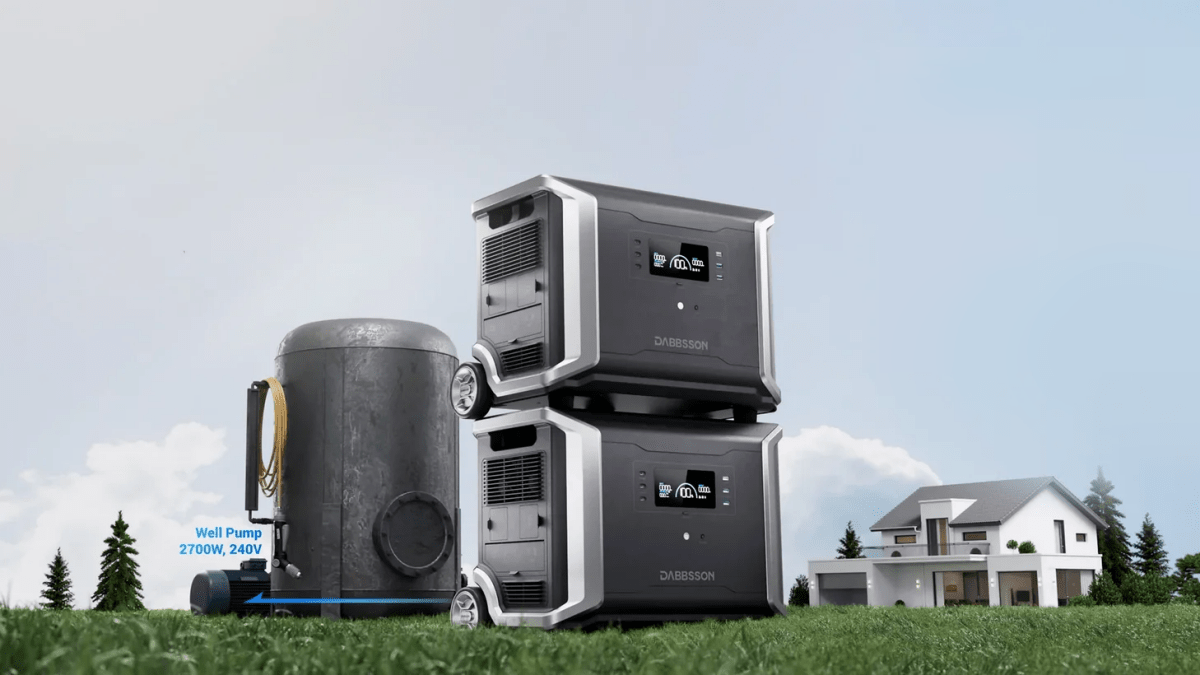
Dabbsson Home Backup Generators: A Comprehensive Analysis of Cost Factors and Cost-Saving Strategies
At Dabbsson, we recognize the critical role home backup generators play during emergencies. Yet, cost is often a significant barrier for consumers considering such an investment. This article provides an in-depth examination of the factors that influence the cost of home backup generators and offers practical advice on how to reduce these expenses.
1. Overview of Home Backup Generator Costs
The cost of a home backup generator can vary widely, from a few thousand to tens of thousands of dollars, depending on a multitude of factors. Gaining an understanding of these factors is essential for consumers to make informed purchasing decisions.
2. Key Factors Influencing Cost
● Generator Size and Power Output: The size and power output of a generator are the primary determinants of its cost. Smaller generators are suitable for powering basic appliances, while larger models can supply electricity for an entire home.
● Installation Expenses: These include the fees for hiring a certified electrician and complying with local building codes.
● Maintenance and Servicing: Routine maintenance and servicing are vital for ensuring the longevity and efficiency of a generator.
● Geographical Location: Regional building regulations, zoning laws, and climate conditions can affect the installation and operational costs of a generator.
● Type of Fuel: The choice between different fuel sources, such as natural gas, propane, diesel, or gasoline, will directly impact the total cost of owning a generator.
3. Strategies for Reducing Home Backup Generator Costs
● Adopting Sustainable Energy Sources: Investing in renewable energy like solar or wind can lead to long-term savings by reducing reliance on expensive fossil fuels.
● Performing DIY Maintenance: Acquiring basic maintenance skills can help you save on service costs and extend the life of your generator.
● Purchasing Off-Peak: Buying a generator during periods of low demand might allow you to take advantage of lower prices.
● Taking Advantage of Rebates and Incentives: Dabbsson may offer discounts or rebates to encourage the adoption of energy-efficient technologies.
● Considering Refurbished Units: Refurbished generators can be a cost-effective alternative, providing similar performance and safety as new models at a reduced price.
4. Dabbsson's Recommended Home Backup Generators
Dabbsson recommends portable solar generators equipped with high-capacity lithium-ion batteries. These generators not only deliver ample power for home appliances but also feature:
● High-efficiency solar charging capabilities.
● User-friendly OLED displays that provide real-time usage data.
● Durable construction suitable for outdoor use.
● Multiple USB ports for convenient charging of various devices.
5. In-Depth Analysis: Weighing Costs Against Benefits
While the initial investment in a home backup generator may seem substantial, the benefits it provides during emergencies are invaluable. Here's a closer look at the cost-benefit analysis:
● Preventing Power Outage Losses: Backup generators can prevent costly losses due to power outages, such as spoiled food and damaged equipment.
● Enhancing Quality of Life: Backup power ensures that daily routines can continue uninterrupted during outages, enhancing overall quality of life.
● Achieving Long-Term Energy Savings: Utilizing renewable energy sources can lead to significant savings on energy costs over time.
● Environmental Impact: Investing in sustainable energy solutions contributes to a reduced carbon footprint and promotes environmental sustainability.
6. Dabbsson's Commitment to Customer Satisfaction
Dabbsson is dedicated to offering customers top-tier home backup generator solutions. Our mission is to provide generators that are not only efficient and reliable but also cost-effective, ensuring that our customers have access to power during critical times.
7. Conclusion
Investing in a home backup generator is more than just a purchase; it's a safeguard for your home's energy needs. By understanding the cost factors and employing strategies to mitigate them, you can make a well-informed decision. Dabbsson stands ready to assist you in selecting the generator that best fits your requirements.
8. Frequently Asked Questions
● Q: What is the typical lifespan of a home backup generator?
A: Home backup generators generally have a lifespan of 10 to 15 years, contingent upon usage frequency and maintenance practices.
● Q: How do I choose the appropriate generator size for my home?
A: Consider your home's electrical demands and intended use when selecting a generator size. Professional consultation can guide you to the optimal choice.
● Q: What are the best practices for generator maintenance?
A: Regular oil changes, air filter inspections, spark plug cleaning, and battery terminal maintenance are key to prolonging your generator's life.
● Q: Are refurbished generators reliable?
A: Refurbished generators are thoroughly tested and meet performance and safety standards. Choosing a reputable supplier ensures reliability.
● Q: What after-sales services does Dabbsson provide?
A: Dabbsson offers a range of after-sales services, including technical support, warranty coverage, and customer consultations.
9. Closing Remarks
At Dabbsson, we are committed to equipping every home with the means to maintain power supply during emergencies. We achieve this by delivering high-quality products and exceptional services, ensuring our customers are never left in the dark.
Home Backup
Sep 02, 2024
Off-Grid Power
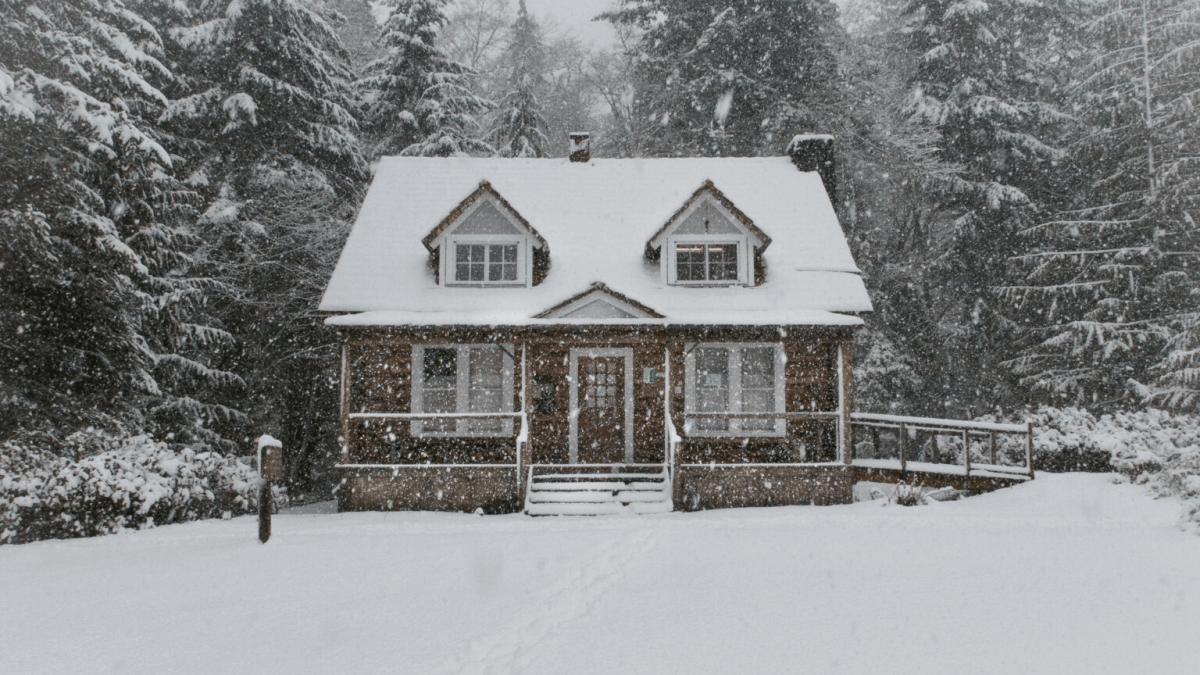
How to Prepare for A Freeze
Winter is coming, and knowing how to prepare for a freeze is crucial. Several precautionary steps can be taken before winter arrives, whether it's protecting your pipes or preparing for power outages caused by winter storms
Off-Grid Power
Oct 21, 2024
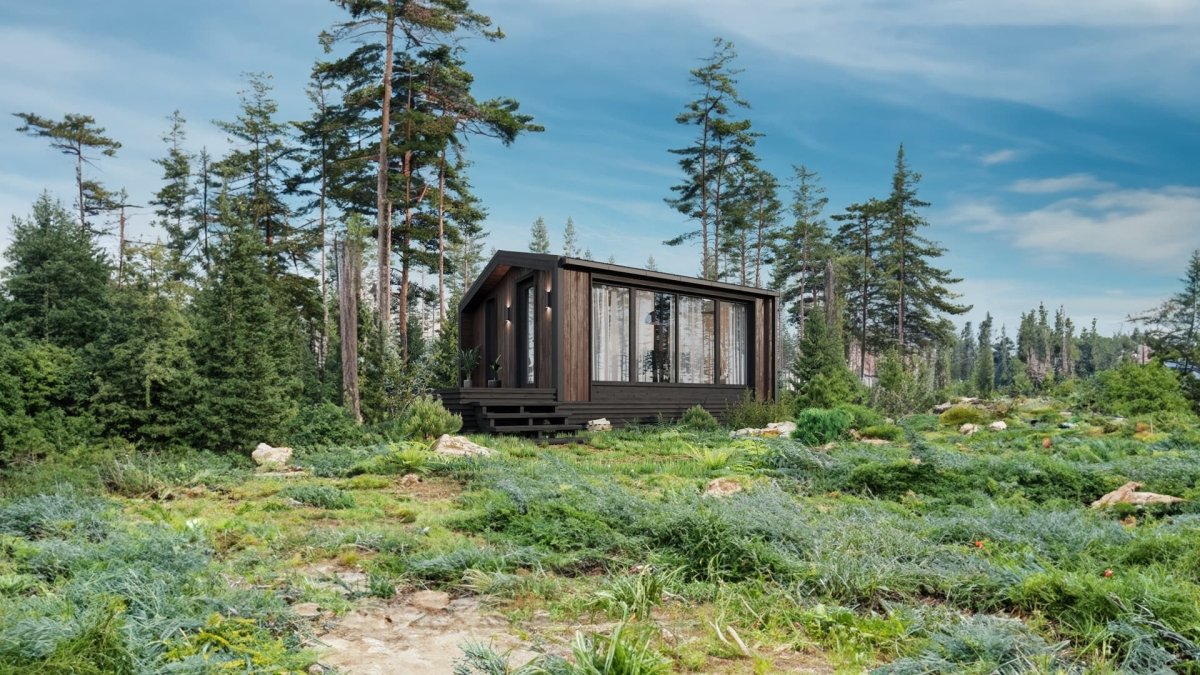
How to Choose the Right Solar Generator for Home and Off Grid Living
Living off grid is about being energy independent and taking care of mother nature, and having the best off-grid solar power system is key to making that life even more sustainable.
Off-Grid Power
Sep 22, 2024
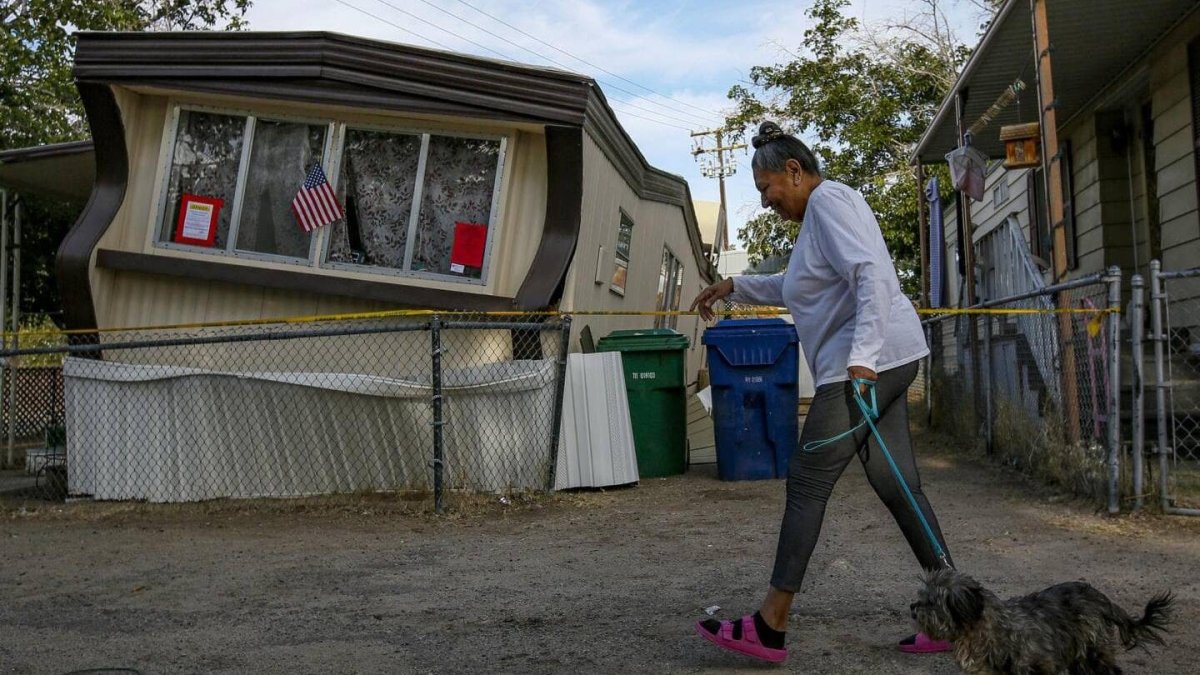
Earthquake Preparedness: How to Protect Your Home and Family from Earthquakes
Earthquakes are unpreditable. Most of the time, you will never get a prewarning. Whether you live in the West Coast state like California or not, preparedness always matters. This guide tells you how best to protect yourself and your family the very minute the ground starts shaking.
Off-Grid Power
Aug 16, 2024
Outdoor

Top 3 Best 1000Wh Outdoor Portable Power Stations of 2025
As outdoor enthusiasts and homeowners seek more reliable and sustainable energy solutions in 2025, the demand for powerful, lightweight, and efficient portable power stations is higher than ever.
Outdoor
Jun 26, 2025
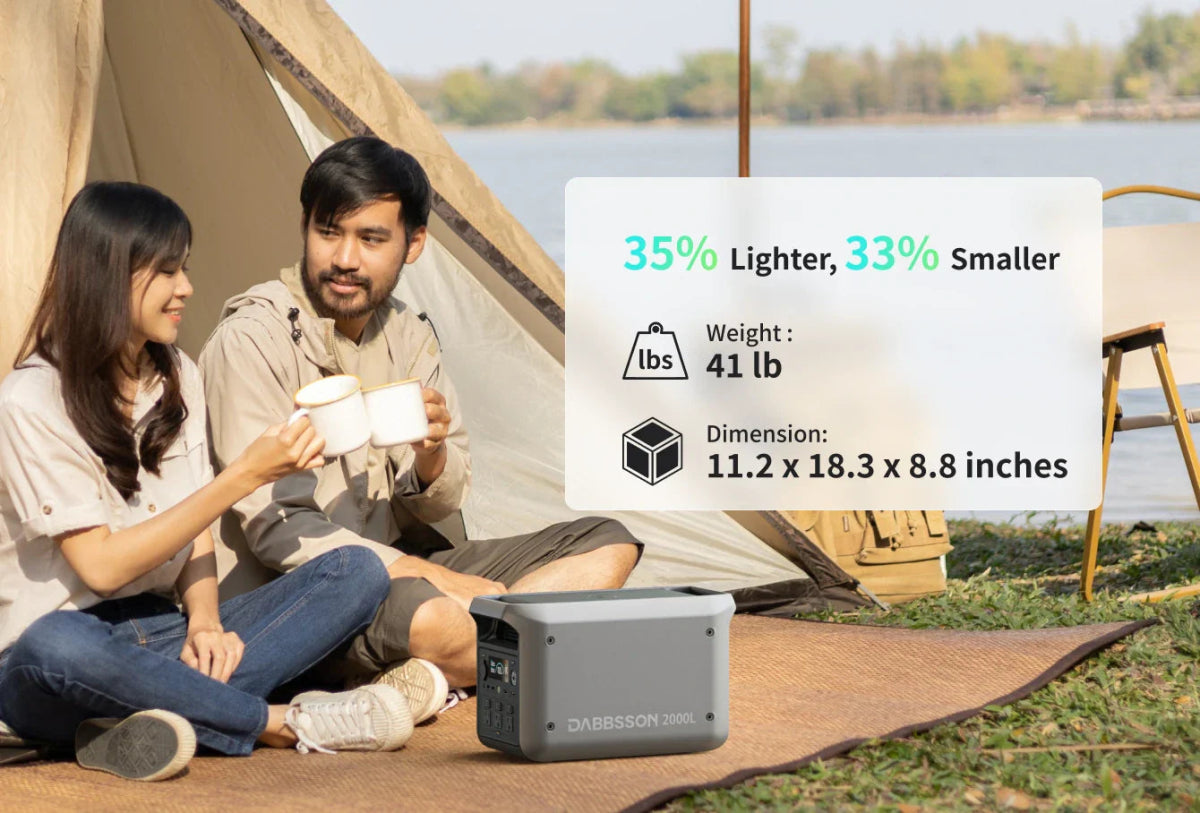
Top 3 Best 2000Wh Portable Power Stations in 2025
In this guide, we compare the Top 3 Best 2000Wh Portable Power Stations in 2025—based on real-world usability, charging efficiency, output power, build quality, and price-performance ratio.
Outdoor
Jun 25, 2025

What to Bring to a Tailgate Party: Tailgating Checklist
Preparation is the best way to make your tailgating experience more memorable. Think about what you may need and equip yourself with all the snacks, refreshments, seats, or other forms of essential equipment in advanced. In this blog post, we will take you through the tailgate checklist to make your party a smashing success.
Outdoor
Sep 02, 2024
Solar Energy
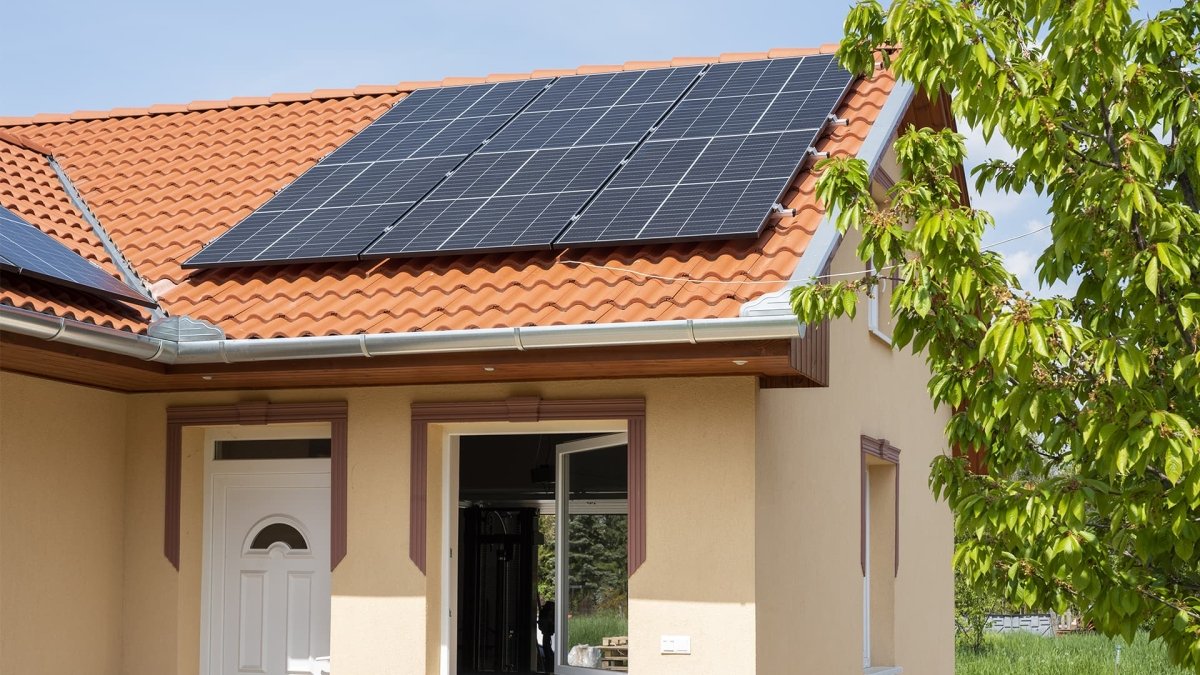
Monocrystalline vs Polycrystalline vs Thin-Film Solar Panels: Which is Most Efficient?
Most homes and businesses these days have chosen solar energy as their solutions for green energy. With too many solar panels out there in the market, most of us might find it challenging to determine which is the most efficient one. In this blog post, we will look at some of the top-performing solar panels as of 2024, to help you choose the right one that works for your home or business.
Solar Energy
Aug 22, 2024
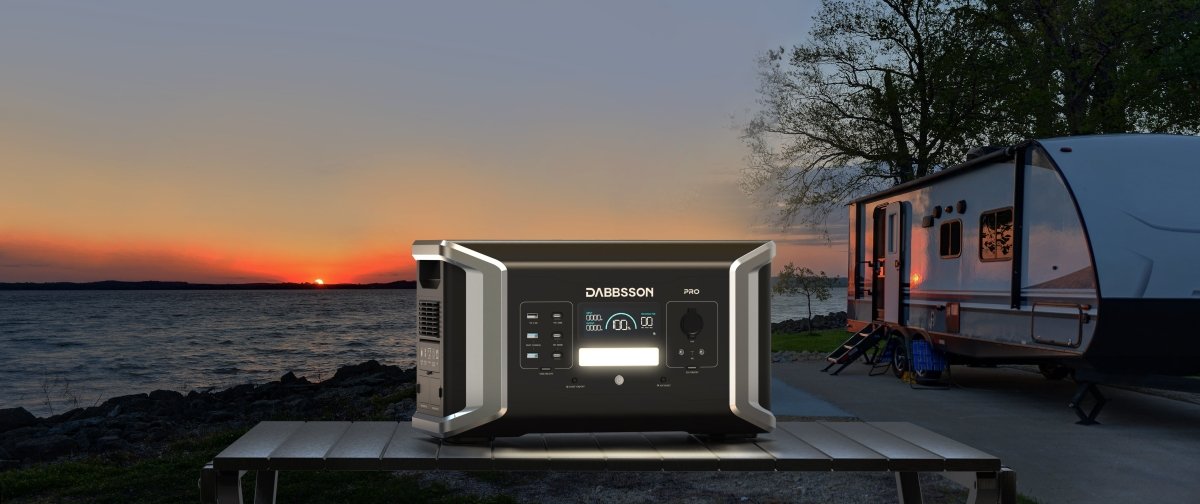
Can Solar Generator Power a Coffee Maker?
I. What is Wattage?II. How Many Wattage Does A coffee Machine Use?III. What's the Different Stages of Coffee-Making?IV. Can a Solar Generator Power a Coffee Maker?V. Final Thoughts
Coffee is a staple in many people’s morning routines, cherished for its flavor and caffeine boost. Despite their short operating time, coffee makers require a significant amount of power. Being off-grid or facing a power outage can disrupt your access to that essential morning cup.
In this article, we’ll explore what wattage is, how much power a coffee maker needs, and how you can harness solar energy to ensure you can enjoy your coffee, no matter the situation. Read on to find out how to keep your coffee maker running under any circumstances.What is Wattage?A watt is the unit of electrical power, calculated using the formula:
Watts (W) = Amps (A) x Volts (V)
You can usually find the wattage of an appliance in the manufacturer's specifications.Your energy bill is based on the total electricity you consume. Knowing the wattage requirements of your appliances is a good step toward reducing your energy consumption!How Many Wattage Does a Coffee Machine Use?Coffee makers vary widely in shape, size, and power consumption, typically using between 550 and 1500 watts. To determine the exact wattage of your coffee maker, refer to the manufacturer's specifications.What's the Different Stages of Coffee-Making?
Different stages, like brewing and idling, use varying amounts of power. The brewing stage generally consumes the most energy. When the machine is simply keeping your coffee hot, it typically uses less power.
Can a Solar Generator Power a Coffee Maker?Yes, you can power a coffee machine with solar energy if you have the appropriate solar generator. Selecting the right solar generator involves understanding the wattage your coffee maker requires. Dabbsson offers a variety of solar generators, allowing you to enjoy your morning cup of coffee using clean, renewable energy.Starting WattageAppliances have a starting wattage, which is the power required to turn them on initially. It's crucial to know the starting wattage of your coffee maker. Verify that the Dabbsson solar generator you choose can supply the necessary wattage to start and operate your coffee maker smoothlyRunning TimeConsider the capacity of your generator, as it affects how much electricity your battery can store and, consequently, how long you can operate before recharging. Both electricity storage and power output are crucial considerations.
When evaluating Dabbsson solar generator, prioritize finding one with an output equal to or greater than your requirements. The ideal solar generator varies depending on what you intend to powerThe latest DBS1000 Pro or DBS1300 is good choice for brewing your daily cup of coffee. But depending on your specific coffee maker, DBS2300 Plus can handle most of the big coffee maker with 2200W output and brew dozens cup of coffee before running dry with 2330Wh capacity.
Final ThoughtsA solar generator presents an excellent choice for powering your coffee maker using clean, renewable energy. Dabbsson provides a range of solar generators suitable for various situations, including off-grid living and home backup systems.
Be sure to explore Dabbsson’s lineup of portable power stations, spanning from the DBS1000 Pro to the DBS2300 Plus, to ensure your coffee cup remains filled!
Solar Energy
Jun 03, 2024
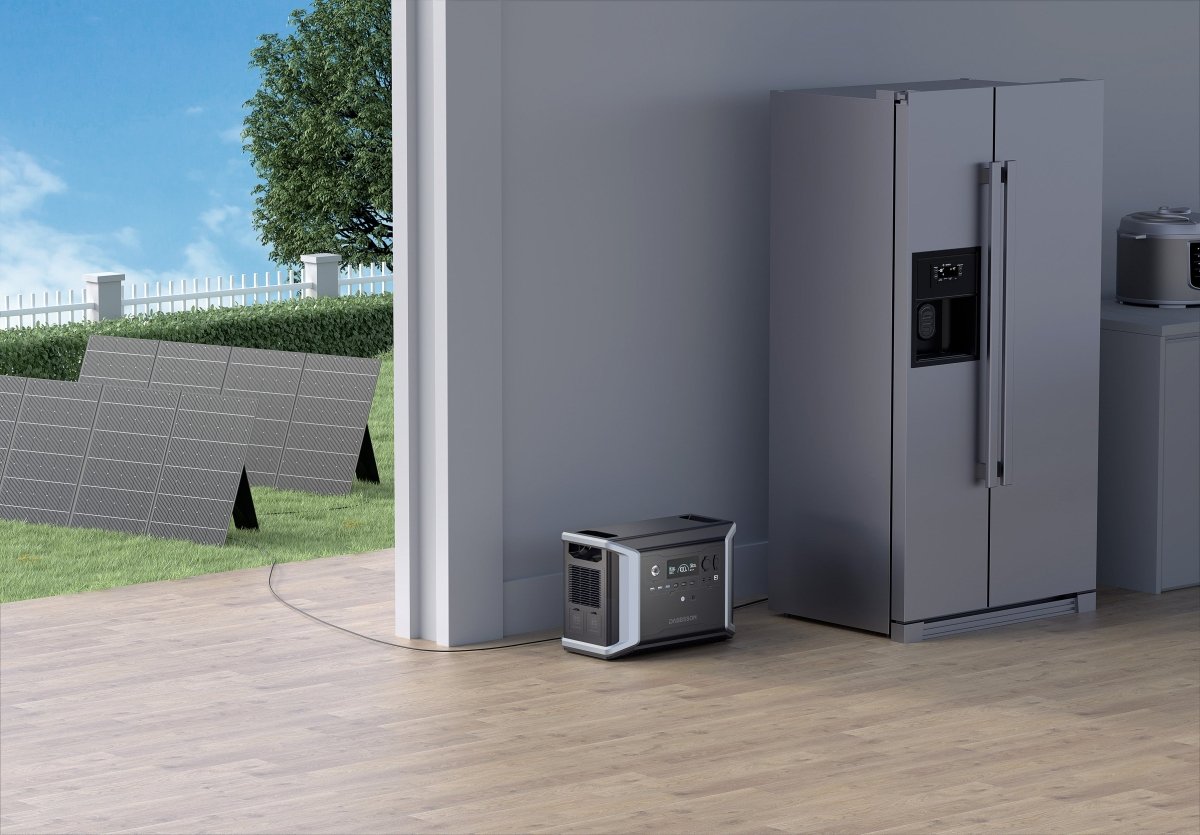
Finding the Best Solar-Powered Backup Generator for Your Home in 2024
I. Importance of home backup power as blackouts become more common II. Dabbsson DBS1300 - Backup Power for ApartmentsA. SpecificationsB. ProsC. Cons III. Dabbsson DBS2300 Plus - Backup Power for Small HomesA. SpecificationsB. ProsC. Cons IV. Dabbsson DBS3500 - Whole-Home Backup PowerA. SpecificationsB. ProsC. Cons V. The Different Types of Home GeneratorsA. Portable GeneratorsB. Off-Grid Solar GeneratorsC. Portable Power StationsD. Hybrid Solar Generators VI. What to Consider When Comparing Home GeneratorsA. Power RequirementsB. SizeC. ReliabilityD. Noise LevelsD. Fuel SourceE. Environmental Impact and SafetyF. Warranties
VII. Final Thoughts
The Best Home Backup Generator from Dabbsson in 2024
Small Time Backup Power For Apartment: DBS1300 + 210W Portable Solar Panels
Medium Size Backup Power For Small Home: DBS2300 Plus + 210W Portable Solar Panels
Whole Home Backup Power For Large House: DBS3500 + 420W Portable Solar Panels
With blackouts becoming a regular occurrence rather than an occasional inconvenience, it's essential to be prepared for when—not if—your home loses access to the electricity grid, whether for a few hours or extended periods.
Now investing in home backup power, such as battery-based systems or generators is crucial for power outage can hit at anytime. Among them Generators are particularly effective for long-term outages because they produce power rather than just storing it, unlike battery-based solutions.
Solar generators from Dabbsson provide a variety of power outputs, storage capacities, charging methods, and connection choices. By selecting the right option, you can keep your lights on, watch TV, run your fridge, or even do laundry when the grid goes down.
Small Time Backup Power For Apartment: DBS1300 + 210W Portable Solar Panels
In the quest for an apartment-friendly generator, Dabbsson DBS1300 comes out to be the ideal option.
As traditional fuel generators are almost unusable in an apartment due to the toxic gases and deafening noise that it generate.
DBS1300 on the other hand with it’s quiet operation and clean operation, is perfect for an apartment.Pair with Dabbsson's 210W portable solar panel to harness renewable energy every day.
With 2×210W Solar Panels, you can do a full recharge in 4-6hours during the day from full sunlight and use that free power for backup or money saving purpose.
You can also charge DBS1300 from standard wall outlet and charge from 0% to 80% in just 44mins and 0-100% in to prepare for power outages.
For longer using time and more power, DBS1300 can be expanded to 4730Wh with 2 add-on batteries and you can even parallel connect it with another set of DBS1300 to get maximum 2000W rated output and 9460Wh capacity.
With 1200W output and 1330Wh, DBS1300 can run most of the essential home appliances for a good amount of time with multiple recharge ways.Specifications:
Capacity: 1330Wh
Add-on Capacity: Maximum 4730Wh with 2 DBS1700B extra batteries, 9460 with 2 DBS1300 + 4 DBS1700B
Parallel connection: connect two DBS1300 with parallel connector for 2000W rated output and 2660Wh
AC Output: 1200W rated output (surge 2400W), 2000W in parallel connection
USB-A: 2×12W, 1×18W
USB-C: 2×30W, 1×100W
Car charger: 12.6V, 10A 126W
AC Charging: 120V, 1000W
Solar Charging: 12-60V, 12A, 400W max
Car Charging: 12/24V, 8A
Weight: 36lbs (16kg)
Dimensions: 14.2 × 10.8 × 8.7in (36.2 × 27.5 × 22.1cm)
Charge cycles: 4500 cycles to 80% (4000 cycles + 500 cycles with BMS)
Warranty: 5 years
Pros:
Suitable for indoors and outdoors use
Pair with solar panels for unlimited amount of renewable energy.
All in one APP management wherever you go
Expendable capacity and output for versatile use
Dabbsson EV Semi-solid state LFP battery with 4500 cycles
Cons:
Not suitable for long-term blackout without add-on battery
1200W output may be challenging when powering multiple appliances.
Medium Size Backup Power For Small Home: DBS2300 Plus & 210W Portable Solar Panels
Large apartments and small homes calls for greater power supply and DBS2300 Plus is ready for the challenge.
With an output of 2200W and 2330Wh capacity, DBS2300 Plus can power 99% of household appliances perfect for home backup.
Connect 2 DBS2300 Plus with parallel connector to double the output and capacity to 4000W output and 4660Wh for more power consuming appliances and longer backup time.
Combing the parallel connection and 4 DBS3000B add-on batteries, DBS2300 Plus can expend to maximum 4000W output, 16kWh capacity enough to power your apartment or home for days.When use indoors, with the charging noise levels at a mere 40 dB, you can rest easy knowing you have reliable energy security without any disruption to your sleep.
If you choose to use solar panels for recharge, DBS2300 Plus can charge to 100% in 3-4 hours in peak sunlight with 4×210W solar panels enjoying renewable free energy everyday.
You can also pair solar with AC and get maximum 1800W charging capacity for 1.5-2 hrs quick recharge to reduce grid reliance on the grid and save on electricity bills.
The extra battery DBS3000B support standalone 1200W solar recharge unlike any other brand for flexible recharge.
Specifications:
Capacity: 2330Wh
Add-on Capacity: Maximum 8kWh with 2 DBS3000B extra batteries, 16kWh with 2 DBS2300 Plus + 4 DBS1700B
Parallel connection: connect two DBS2300 Plus with parallel connector for 4000W rated output and 4.6kWh
AC Output: 2200W rated output (surge 4400W), 4000W in parallel connection
USB-A: 2×12W, 1×18W
USB-C: 2×30W, 1×100W
Car charger: 12.6V, 10A 126W
AC Charging: 120V, 1800W
Solar Charging: 12-60V, 25A, 800W max
Car Charging: 12/24V, 8A
Weight: 54lbs (24.6kg)
Dimensions: 17 × 10 ×11.9in (43.2 × 25.4 × 30.3cm)
Charge cycles: 4500 cycles to 80% (4000 cycles + 500 cycles with BMS)
Warranty: 5 years
Prons:
Power 99% of home appliances with 2200W output and 2330Wh capacity
Expandable capacity from 2.3kWh to 16kWh, output from 2200W to 4000W
All in one APP management
Recharge with solar panels for unlimited free energy
Dabbsson EV Semi-solid state LFP battery with 4500 charge cycles
Cons:
Increased size and weight making it more difficult to move around compared with DBS1300.
Whole Home Backup Power For Large House: DBS3500 + 420W Portable Solar Panels
DBS3500 can power your entire home by pairing it with a transfer switch. When the power outage hits, just switch the DBS3500 on and enjoy backup power for entire house.
Connect two DBS3500 with DBS3500 parallel connector to get 240V, 7000W output and run almost any heavy-duty appliances at your home.Not only can you have 240V, 7000W output, you can also expand the capacity to up to 28kWh enough to power your home for weeks.Pair with maximum 4800W solar input, you can power your home without needing to use the grid ever.This can act as a long-term money-saving setup, as now you can run your home solely on free solar power.You can also charge DBS3500 on regular AC outlet and charge from 0-100% in 2.2 hrs.
Combine with Dabbsson App to set up a charging and output time, you can charge your DBS3500 when the electricity is cheaper and use it during the peak hours when the electricity is much expensive to save money.
DBS3500 is eligible for a 30% federal tax credit when install the Dabbsson DBS3500 as a home power solution. Talk with your tax adviser and get 30% saving to get your money back even faster.
Specifications:
Capacity: 3430Wh
Add-on Capacity: Maximum 14kWh with 2 DBS5300B extra batteries, 28kWh with 2 DBS3500 + 4 DBS5300B
Parallel connection: connect two DBS3500 with parallel connector for 240V 7000W rated output and 6.8kWh.
AC Output: 3600W rated output (surge 7200W), 240V 7000W in parallel connection
USB-A: 1×12W, 2×18W
USB-C: 1×30W, 2×100W
Car charger: 12.6V, 10A 126W
AC Charging: 120V, 1800W
Solar Charging: 12-150V, 25A, 2400W max
Car Charging: 12/24V, 8A
Weight: 90.5lbs (41.06kg)
Dimensions: 21 × 12 ×15.5in (53.3 × 30.5 × 39.3cm)
Charge cycles: 4500 cycles to 80% (4000 cycles + 500 cycles with BMS)
Warranty: 5 years
Pros:
1. High 3600W output to run almost all the household appliances.2. Parallel connecting two DBS3500 to get 240V 7000W for heavy-duty appliances.3. Expandable to 28kWh for weeks of backup power4. Can be integrated with transfer switch to power entire house5. Massive solar charging capacity to run your house on renewable energy6. Pod and wheels to move the heavy units.Cons:1. DBS3500 can be difficult to move around when you can’t wheel it
The Different Types of Home Generators
When choosing a home generator, it's essential to compare similar options. Some generators can power your entire home, while others only provide enough output for critical appliances and personal electronics. Home backup power generators vary in capabilities and limitations based on their fuel source and other factors. Here's a breakdown of the basic types of home backup power generators.
Portable Generators
Traditional portable generators are smaller units that you can store discreetly and bring out during an outage. They typically power essential appliances rather than the entire house and run on fossil fuels like propane, diesel, gasoline, or natural gas. The main downside is that they’re noisy and produce toxic emissions like carbon monoxide. You can’t operate them indoors, and they require a constant fuel supply.
Off-Grid Solar Generators
Solar generators are a modern alternative that doesn’t require fossil fuel, are safe to operate indoors, and are virtually silent. They capture sunlight with PV modules like solar panels and convert it to electricity using the photovoltaic effect. Solar panels need a portable power station or other balance of system to convert and store the electricity produced.
Portable Power Stations
A portable power station is essentially a large battery that stores electricity for later use. While it can’t generate power independently, it’s useful for storing backup energy for emergency outages. Brands like Dabbsson offer portable power stations that can be charged with solar panels, creating a solar generator. You can also recharge them using AC electricity, a car adapter, or USB-C. Charging with solar panels is slower than a wall plug but results in a clean, renewable energy source.
Hybrid Solar Generators
Hybrid solar generators combine solar power and battery storage, offering the benefits of both off-grid independence and on-grid convenience. Systems like the Dabbsson Power Stations provide multiple charging options, including AC grid power and DC car adapters, and can function independently of the grid as long as there is sufficient sunlight. They save money and keep your home running during extended power outages.
What to Consider When Comparing Home Generators
Choosing the right generator for your home requires careful consideration of several crucial factors. Here’s what you need to keep in mind before making your backup power investment:
Power Requirements
Start by determining how much power you need during an extended blackout. For a few appliances and personal devices like smartphones and laptops, a small generator may suffice. However, to keep your entire house running as usual, you'll need a high-capacity battery backup solution or a standby generator.
Size
Opt for the smallest generator that meets your needs. A compact unit is typically the best choice for home backup requirements, as it’s easier to store and access quickly during a power outage. Portable generators are also great for off-grid applications like camping and RV life. If you spend significant time in a van or RV, compact off-grid power solutions like Dabbsson Power Station are ideal.
Reliability
Your backup power source needs to be reliable when a blackout hits. If possible, invest in a generator that kicks in automatically or at least one that’s easy to activate without fumbling in the dark. The best option is a generator that integrates with your home’s electrical circuits for seamless power transition.
Noise Levels
Consider the noise level of the generator. Fossil fuel generators are typically very noisy, while battery backups and solar generators operate almost silently. Both you and your neighbors will appreciate a quieter option.
Fuel Source
Fuel availability and storage are important considerations. Gasoline has a short shelf life and can be expensive, whereas propane is a more stable and economical option. Units connected to your home’s natural gas line can activate seamlessly during an outage, but this may increase your energy bill. Solar power and battery backups are cost-effective and environmentally friendly alternatives.
Environmental Impact and Safety
Traditional generators burn fossil fuels and release harmful emissions like carbon monoxide and greenhouse gases. These emissions can be dangerous to your health and the environment. Using clean, renewable solar power will keep your family safe from toxic emissions and reduce your carbon footprint.
Warranties
A backup power generator is a significant investment, so look for a warranty that offers long-term protection. Choose a brand or manufacturer known for the durability and reliability of its products to ensure peace of mind.
By carefully considering these factors, you can make an informed decision and choose the best generator for your home’s needs.
Final Thoughts
Purchasing and installing a home generator is the best way to prepare for inevitable utility grid failures. Investing in energy security is essential for your family's safety, but it's not a cheap endeavor. Carefully calculate your electricity needs and consider the impact of a home generator like the Dabbsson DBS3500 on your budget, your family’s health, and the environment. Dabbsson offers solar generators for every home and using case.
Solar Energy
May 25, 2024
